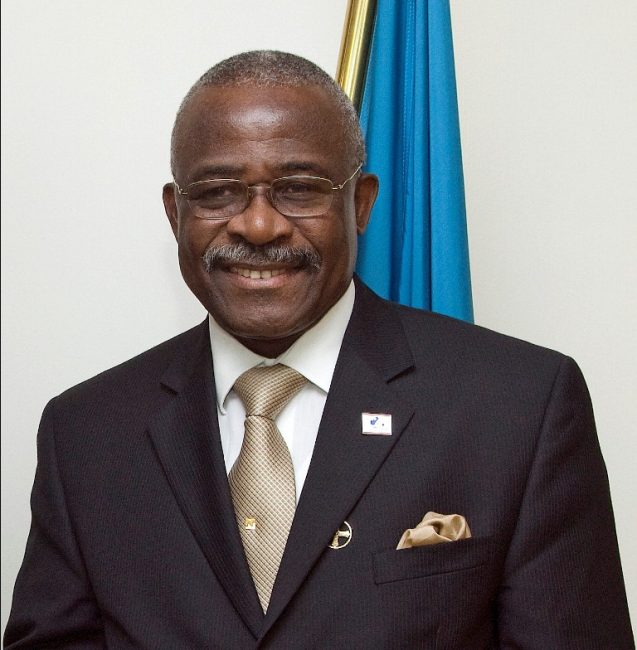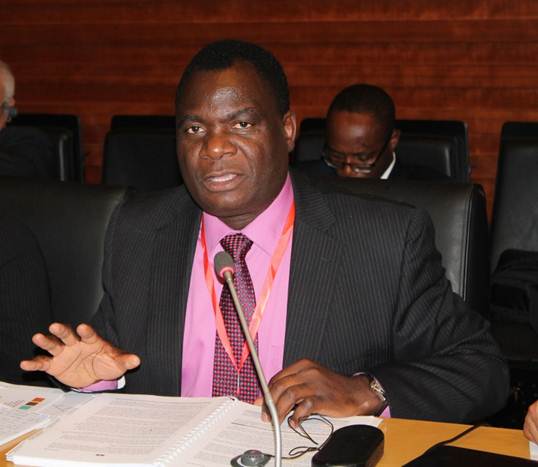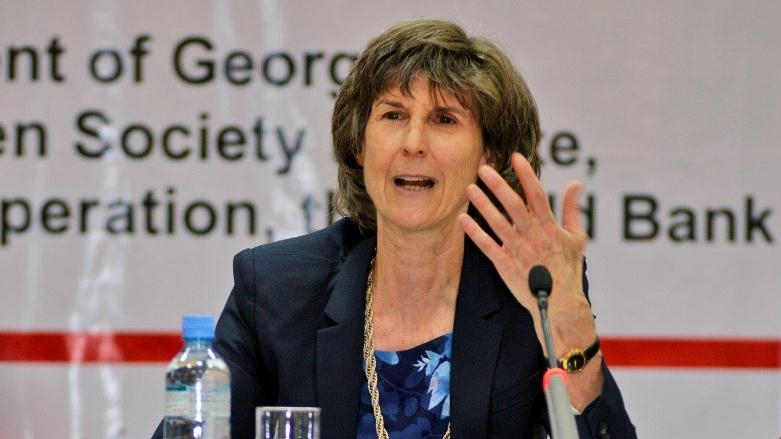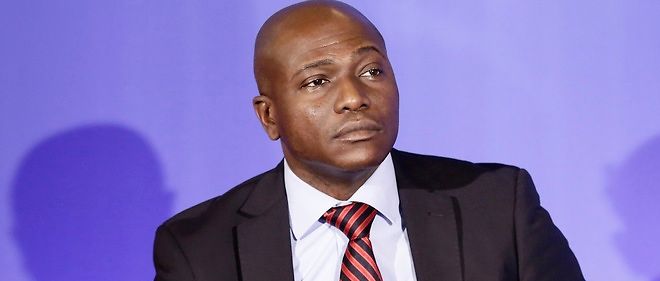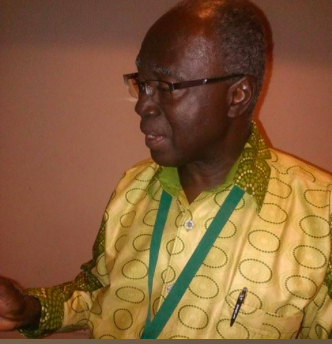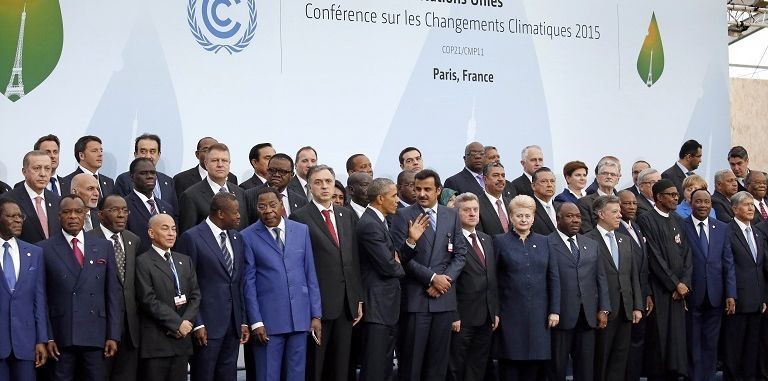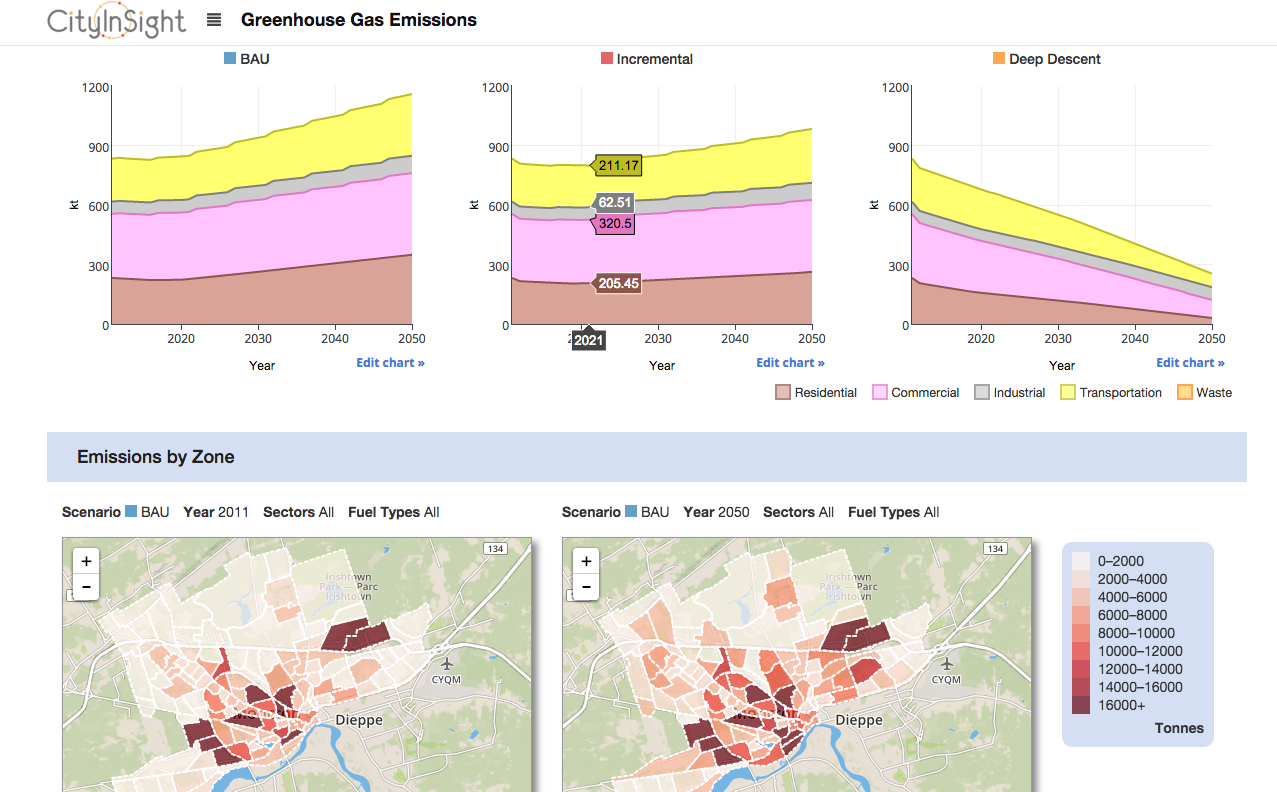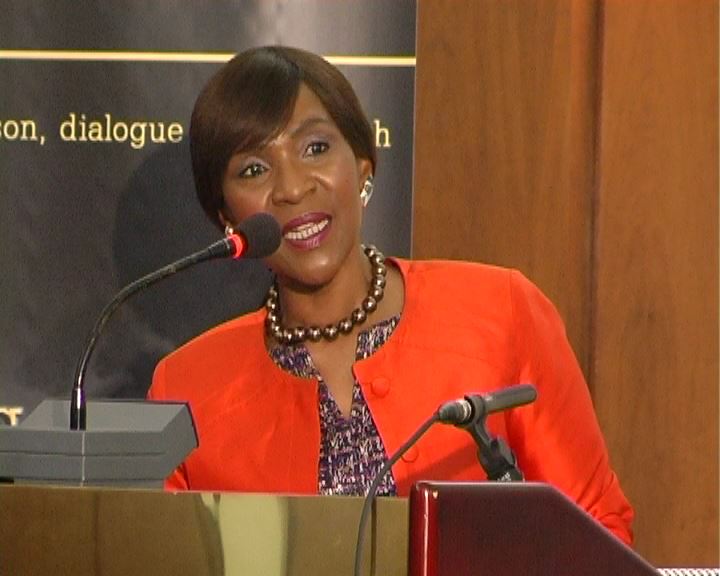On Friday, 4 December, the ADP contact group considered a revised compilation text throughout the day. In the morning and afternoon, informal consultations and contact groups finalised work under the SBs, and a contact group under the COP took place. The SBI and SBSTA closing plenaries took place in the evening.
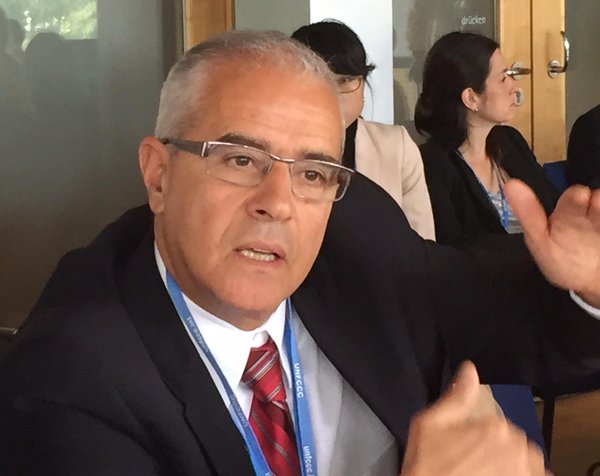
ADP CONTACT GROUP
In the morning, ADP Co-Chair Ahmed Djoghlaf invited comments on two documents, a revised draft agreement and decision text on workstreams 1 and 2, “the compilation text,” and a document containing the work of the ADP contact group incorporating bridging proposals by the co-facilitators, “the compilation text with bridging proposals,” both issued on Friday, 4 December, at 10:00am.
South Africa, for the G-77/CHINA, requested time to consult, noting the group’s surprise that the second document contained bridging proposals embedded within the compilation text. Indicating readiness to work with the texts, the EU noted that seeing bridging proposals in a textual context was helpful.
Malaysia, for the LMDCs, underscored the understanding that only the revised draft agreement was to be treated as a working document and that the Secretariat would highlight the bridging proposals in the second document. Co-Chair Djoghlaf then suspended the contact group to allow for groups to consult.
In the afternoon, parties considered the compilation text and the compilation text with bridging proposals. Co-Chair Djoghlaf proposed that parties complete a first reading of the text without spin-off groups, with the aim of creating a shorter but comprehensive document for the ministers.
South Africa, for the G-77/CHINA, supported by many parties, expressed willingness to negotiate on the basis of the compilation text with bridging proposals, and proposed that parties be allowed to insert language where necessary and meet separately to discuss specific proposals.
On purpose/general (Articles 2 and 2bis), Co-Chair Djoghlaf suggested progress was not yet possible. Several parties raised points of order, noting it was only the first reading and parties should be allowed to comment.
After comments on Articles 2 and 2bis and interventions on the mode of work, the Co-Chairs and the COP21 Presidency consulted on the way forward.
Laurence Tubiana, COP21 Presidency, highlighted that the compilation text with bridging proposals provides a “good base” and urged parties to focus on producing a text for the COP. Malaysia, for the LMDCs, proposed that parties be allowed to identify key elements of concern that, together with the compilation text with bridging proposals, would be forwarded for negotiations under the COP.
After TUVALU, the US, the EU, VENEZUELA, CUBA and COLOMBIA expressed general support for using the compilation text with bridging proposals in line with the LMDCs’ proposal, parties began indicating key elements of concern.
On mitigation (Article 3), the EU, supported by Colombia, for AILAC, Maldives, for AOSIS, and the US called for clarifying the date for the submission of contributions. NICARAGUA and BOLIVIA called for Mother Earth to be reinserted in the text.
At the end of a preambular paragraph on special needs, EL SALVADOR requested adding “and the Central American isthmus.” In a paragraph on the long-term vision for technology development and transfer (Article 7), MEXICO asked that “socially and environmentally sound technology” be reinserted.
In the evening, parties continued to identify key elements that they wished to be reflected. On mitigation (Article 3), BOLIVIA, with VENEZUELA, urged the inclusion of non-market mechanisms.
On finance (Article 6), Costa Rica, for AILAC, asked for a clear roadmap, including a short-term goal, and balance between mitigation and adaptation. She said that language on vulnerability was being coordinated within the G-77/China.
On purpose (Article 2), VENEZUELA supported “stabilisation” of GHG emissions and, with SAUDI ARABIA and PAKISTAN, opposed the inclusion of “decarbonisation” and “carbon neutrality.” KYRGYZSTAN asked to include vulnerability of mountains in the preambular section.
TUVALU urged reinsertion of language on loss and damage that preserves the issue as an independent article. CHINA, among others, called for the CMA to determine cycles after 2030.
On adaptation (Article 4), Bolivia, for the G-77/CHINA, asked to include details on a long-term vision and urged avoiding prescriptive language.
The G-77/CHINA said MRV of finance from developed countries is missing in finance (Article 6), and INDIA urged inclusion of such MRV in transparency (Article 9). The AFRICAN GROUP called exclusion of “African countries” from preambular paragraphs on specific needs “a red line.”
Adjourning the meeting, Co-Chair Djoghlaf indicated, and parties agreed, that a reflection note capturing parties’ comments would be provided alongside the compilation text with bridging proposals and that work would resume in the morning, on Saturday, 4 December.
COP 21
CONTACT GROUPS: Joint Implementation (JI): This contact group, co-chaired by Yaw Osafo (Ghana), met in the morning. The EU called for, inter alia: reviewing changes necessary to the rules of procedure of the JI Supervisory Committee (JISC); providing a mandate to the JISC for third-party review; and taking concerns of stakeholders into account.
JAPAN stressed the importance of revitalising JI. SWITZERLAND asked for an analysis on the role of JI beyond 2020, and synergies with other market mechanisms. Parties agreed that the Co-Chairs would prepare a draft decision for consideration at the next contact group meeting.
SBI CLOSING PLENARY
ORGANISATIONAL MATTERS: Election of Officers Other than the Chair: SBI Chair Amena Yauvoli (Fiji) said that consultations on the nomination of the SBI Vice-Chair had been concluded, but no nominations had been received for the SBI Rapporteur.
The SBI agreed to nominate Zhihua Chen (China) as the SBI Vice-Chair and that Sidat Yaffa (The Gambia) shall remain in office until his replacement has been elected.
Reporting From and Review of Annex I Parties to the Convention: Outcome of the First Round of the IAR Process (2014-2015): The SBI adopted conclusions (FCCC/SBI/2015/L.20).
Revision of the “Guidelines for the Preparation of National Communications by Parties Included in Annex I to the Convention Part II: UNFCCC Reporting Guidelines on National Communications”: The SBI adopted conclusions (FCCC/SBI/2015/L.23).
REPORTING FROM NON-ANNEX I PARTIES TO THE CONVENTION: Work of the Consultative Group of Experts on National Communications from Non-Annex I Parties to the Convention: The SBI adopted conclusions (FCCC/SBI/2015/L.21).
Provision of Financial and Technical Support: The SBI adopted conclusions (FCCC/SBI/2015/L.24).
MATTERS RELATED TO THE MECHANISMS UNDER THE KYOTO PROTOCOL: Review of the Modalities and Procedures for the CDM: The SBI adopted conclusions (FCCC/SBI/2015/L.28).
Review of the JI Guidelines: The SBI adopted conclusions (FCCC/SBI/2015/L.30).
Modalities for Expediting the Continued Issuance, Transfer and Acquisition of JI ERUs: The SBI adopted conclusions (FCCC/SBI/2015/L.25).
MATTERS RELATING TO LDCS: The SBI adopted conclusions (FCCC/SBI/2015/L.22).
NATIONAL ADAPTATION PLANS: The SBI adopted conclusions and forwarded a draft decision (FCCC/SBI/2015/L.32 and Add.1) for consideration and adoption by COP 21.
REPORT OF THE ADAPTATION COMMITTEE: The SBI adopted conclusions and forwarded a draft decision for consideration and adoption by COP 21 (FCCC/SB/2015/L.3).
REPORT OF THE EXECUTIVE COMMITTEE OF THE WIM: The SBI adopted conclusions and forwarded a draft decision for consideration and adoption by COP 21 (FCCC/SB/2015/L.5).
DEVELOPMENT AND TRANSFER OF TECHNOLOGIES AND IMPLEMENTATION OF THE TECHNOLOGY MECHANISM: Joint Annual Report of the TEC and the CTCN: The SBI adopted conclusions and forwarded a draft decision for consideration and adoption by COP 21 (FCCC/SB/2015/L.4).
Poznan Strategic Programme on Technology Transfer: The SBI adopted conclusions (FCCC/SBI/2015/L.29).
CAPACITY-BUILDING: Capacity-Building Under the Convention: Several Parties expressed willingness to further engage constructively on this item under the COP. The US, AUSTRALIA and JAPAN raised concerns about the process in which the draft conclusions were reached.
SWAZILAND, supported by the GAMBIA, noted the draft text “provides a landing ground and marks the beginning of defining capacity building.”
The EU understood the need to strengthen capacity-building institutions under the Convention as “our common vision” and hoped for the establishment of a capacity-building committee as an outcome of COP 21.
Senegal, for the LDCs, with the PHILIPPINES, thanked the EU for their positive spirit that has allowed capacity building to be taken up at a higher level. BURUNDI lamented that “the text is still bracketed” and emphasized capacity building as necessary for her country to adapt to climate change impacts.
The SBI adopted conclusions and forwarded draft decision text to the COP for further consideration (FCCC/SBI/2015/L.33).
Capacity Building under the Kyoto Protocol: The SBI adopted conclusions (FCCC/SBI/2015/L.34).
IMPACT OF THE IMPLEMENTATION OF RESPONSE MEASURES: Forum and Work Programme: The SBI adopted conclusions (FCCC/SB/2015/L.6).
Matters Relating to Protocol Article 3.14: The SBI agreed to continue consultations on this sub-item at SBI 44.
Progress on the Implementation of Decision 1/CP.10: The SBI agreed to continue consultations on this sub-item at SBI 44.
THE 2013-2015 REVIEW: SBI Chair Yauvoli reported that parties had been unable to complete work on this matter. The SBI agreed, on the basis of Decision 2/CP.17 (outcome of the work of the AWG-LCA) paragraph 166 (requesting the SBs to report on their considerations and findings to the COP), that the SBI and SBSTA Chairs seek the guidance of the COP on the matter.
Expressing extreme disappointment over the inability to complete the mandate of the review, Maldives, for AOSIS, stressed that the findings of the review underscore that the “guardrail of 2°C is wholly inadequate” and that “no outcome on the review is not an option.”
Deploring the lack of agreement on a COP decision on the matter, SWITZERLAND suggested parties were nevertheless in an “excellent position” to fulfill the mandate of the review.
Expressing disappointment that the contact group had not been able to agree on draft conclusions or “provide draft text to the COP,” the EU called on all parties to engage on the issue, noting that, for the most vulnerable countries “below 2°C is not enough.”
GENDER AND CLIMATE CHANGE: The SBI adopted conclusions (FCCC/SBI/2015/L.31).
ADMINISTRATIVE, FINANCIAL AND INSTITUTIONAL MATTERS: Budget Performance for the Biennium 2014-2015 and Audit Report and Financial Statements for 2014: On these agenda sub-items, the SBI jointly adopted conclusions and forwarded draft decisions for consideration and adoption by COP 21 and CMP 11 (FCCC/SBI/2015/L.26 and L.27).
CLOSURE AND REPORT OF THE SESSION: During closing statements, South Africa, for the G-77/CHINA, called for, inter alia: the adoption of a decision on response measures; establishment, in Paris, of the necessary institutions to enhance capacity building; and enhancement of information provided in the IAR on support to developing countries.
Sudan, for the AFRICAN GROUP, lamented insufficient time to complete consideration of some issues, while welcoming progress on others.
Maldives, for AOSIS, called for the COP Presidency to take up the issue of 1.5°C “with some urgency” so as to ensure a substantive agreement on the 2013-2015 review.
Australia, for the UMBRELLA GROUP, expressed disappointment over parties’ inability to agree on how to communicate the 2013-2015 review outcome.
Emphasising that the final report of the structured expert dialogue (SED) “sends a very clear signal that the 2°C limit is inadequate,” Angola, for the LDCs, expressed disappointment that a “handful of countries” did not engage to reach a substantive outcome on the review.
The EU highlighted progress on adaptation, the WIM, technology transfer and cooperation, and gender mainstreaming, as well as some progress on market mechanisms, with the exception of the CDM review.
CAN, for ENGOs, expressed deep concern about the failed outcome of the review. Underscoring that some delegations rely on technical assistance from NGOs, Climate Justice Now! (CJN!), for ENGOs, called on the COP 21 Presidency to ensure “a fair, just and transparent process forward.”
YOUTH NGOs (YOUNGOs) emphasised that the work of the SBI is crucial for implementation of mitigation, adaptation, and loss and damage. The Secretariat informed parties of the administrative and budgetary implications of the conclusions adopted by the SBI.
SBI Rapporteur Sidat Yaffa (The Gambia) presented, and the SBI adopted, the draft report of SBI 43 (FCCC/SBI/2015/L.19). SBI Chair Yauvoli thanked all delegates for their work and noted SBI 43 accomplished much work, including the completion of the first round of IAR. SBI 43 was gaveled to a close at 9:23pm.
SBSTA CLOSING PLENARY
ORGANISATIONAL MATTERS: Election of Officers Other than the Chair: SBSTA Chair Lidia Wojtal (Poland) announced that Tibor Schaffhauser (Hungary) would serve as SBSTA Vice Chair and Aderito Santana (São Tomé and Príncipe) would serve as Rapporteur.
NAIROBI WORK PROGRAMME: The SBSTA adopted the conclusions (FCCC/SBSTA/2015/L.19).
REPORT OF THE ADAPTATION COMMITTEE: The SBSTA adopted the conclusions and forwarded a draft decision for consideration and adoption by the COP (FCCC/SB/2015/L.3).
DEVELOPMENT AND TRANSFER OF TECHNOLOGIES AND IMPLEMENTATION OF THE TECHNOLOGY MECHANISM: Joint Annual Report of the TEC and the CTCN: The SBSTA adopted the conclusions and forwarded a draft decision for consideration and adoption by the COP (FCCC/SB/2015/L.4).
ISSUES RELATING TO AGRICULTURE: SBSTA Chair Wojtal clarified that references to paragraphs 87 to 89 should read 83 to 89, and with this editorial amendment, the SBSTA adopted the conclusions (FCCC/SBSTA/2015/L.17).
REPORT OF THE EXECUTIVE COMMITTEE OF THE WIM: The SBSTA adopted the conclusions and forwarded a draft decision for consideration and adoption by the COP (FCCC/SB/2015/L.5).
MATTERS RELATING TO SCIENCE AND REVIEW: Research and Systematic Observation: The SBSTA adopted the conclusions (FCCC/SBSTA/2015/L.18).
The 2013-2015 Review: SBSTA Chair Wojtal reported that parties were unable to reach agreement on this item and will seek the guidance of the COP.
NORWAY, the US, JAPAN and SAINT LUCIA expressed their disappointment that the contact group was unable to agree to a decision on this item.
IMPACT OF THE IMPLEMENTATION OF RESPONSE MEASURES: Forum and Work Programme: The SBSTA adopted the conclusions and forwarded a draft decision for consideration and adoption by the COP (FCCC/SB/2015/L.6).
Matters Relating to Protocol Article 2.3: SBSTA Chair Wojtal recalled that this agenda sub-item was considered with the forum and work programme and that this would be reflected in the meeting report.
METHODOLOGICAL ISSUES UNDER THE CONVENTION: Methodologies for the Reporting of Financial Information by Annex I Parties to the Convention: The SBSTA adopted the conclusions and forwarded a draft decision for consideration and adoption by the COP (FCCC/SBSTA/2015/L.22).
Emissions from Bunker Fuels: The SBSTA adopted conclusions (FCCC/SBSTA/2015/L.16).
METHODOLOGICAL ISSUES UNDER THE KYOTO PROTOCOL: Implications of the Implementation of Decisions 2/CMP.7 to 4/CMP.7 and 1/CMP.8 on the Previous Decisions on Methodological Issues Related to the Kyoto Protocol, Including Those Relating to Articles 5, 7 and 8 of the Kyoto Protocol: The SBSTA adopted conclusions and forwarded a draft decision for consideration and adoption by the CMP (FCCC/SBSTA/2015/L.27, Add.1 and Add. 2).
Accounting, Reporting and Review Requirements for Annex I Parties without QELRCs for the Second Commitment Period:The SBSTA adopted conclusions (FCCC/SBSTA/2015/L.28).
Clarification of the Text in Section G (Article 3.7ter) of the Doha Amendment to the Kyoto Protocol: The SBSTA adopted conclusions and forwarded a draft decision for consideration and adoption by the CMP (FCCC/SBSTA/2015/L.29 and Add.1).
LULUCF under Protocol Article 3.3 and 3.4, and under the CDM: The SBSTA adopted conclusions (FCCC/SBSTA/2015/L.20).
MARKET AND NON-MARKET MECHANISMS UNDER THE CONVENTION: SBSTA Chair Wojtal reported that parties could not reach agreement on this issue for any of the sub-items: the framework for various approaches; non-market based approaches; and new market-based approaches. She said that, according to Rule 16 of the draft rules of procedure being applied, this item would be taken up at the next SBSTA session.
REPORTS ON OTHER ACTIVITIES: Annual Report on the Technical Review of GHG Inventories from Annex I Parties to the Convention: The SBSTA adopted the draft conclusions and forwarded a draft decision for consideration and adoption by the COP (FCCC/SBSTA/2015/L.21 and Add.1).
Annual Report on the Technical Review of Annex I Parties’ GHG Inventories and Other Information Reported by Annex I Parties, as Defined in Protocol Article 1.7: The SBSTA adopted conclusions and forwarded a draft decision for consideration and adoption by the CMP (FCCC/SBSTA/2015/L.30 and Add.1).
CLOSURE OF THE SESSION: SBSTA Rapporteur Stasile Znutiene (Lithuania) presented, and the SBSTA adopted, its report (FCCC/SBSTA/2015/L.15).
South Africa, for the G-77/CHINA, said that the negative implications of response measures on developing countries must be minimised. On bunker fuels, he underscored that this issue should be dealt with multilaterally.
The EU highlighted the package of decisions on methodological issues under the Kyoto Protocol as key to ending the “long preparatory work” for the implementation of the second commitment period.
Australia, for the UMBRELLA GROUP, welcomed the finalisation of rules for the second commitment period.
Maldives, for AOSIS, emphasised that outcomes of the SED include support of the 1.5 °C long-term global goal and expressed dismay that the actions of a few countries prevented the communication of these findings to the COP.
Angola, for the LDCs, emphasized the importance of discussing the review under the COP.
Sudan, for the AFRICAN GROUP, expressed concern where no progress was made due to time constraints.
SAINT LUCIA said that with the delivery of a set of rules regarding the second commitment period, parties can look forward to additional ratifications and the period’s entry into force.
YOUNGOs called for, inter alia, a globally funded feed-in tariff scheme, and avoiding land-based sequestration as the science behind this is “questionable.”
CAN, for ENGOs, underscored that ICAO and IMO are failing to address the significant impacts of aviation and shipping.
CJN!, for ENGOs, opposed the inclusion of “false solutions,” calling for an end to discussions on market-based approaches.
FARMERS urged more inclusive processes for the next agriculture workshop to allow the constituency to share their knowledge.
Thanking everyone for their efforts during this intensive and brief SBSTA session, SBSTA Chair Wojtal gaveled the meeting to a close at 10:26pm.
IN THE CORRIDORS
Friday morning opened with delegates frantically trying to “digest” the two new documents produced overnight by the ADP Co-Chairs in cooperation with the co-facilitators. Many worried about bridging proposals being incorporated into the compilation text, both for their loss of visibility and the unclear status of this new text.
Tensions ran high in the ADP contact group as the Saturday, 5 December deadline loomed for the ADP to transmit text to the COP. The mode of work for the second week thus became a hotly anticipated question. One delegate speculated that ministers would be asked to chair spin-off groups. Another wondered if ministers should be convened in a roundtable format. An optimistic participant hoped that the transparent process in week one would not be lost in week two.


